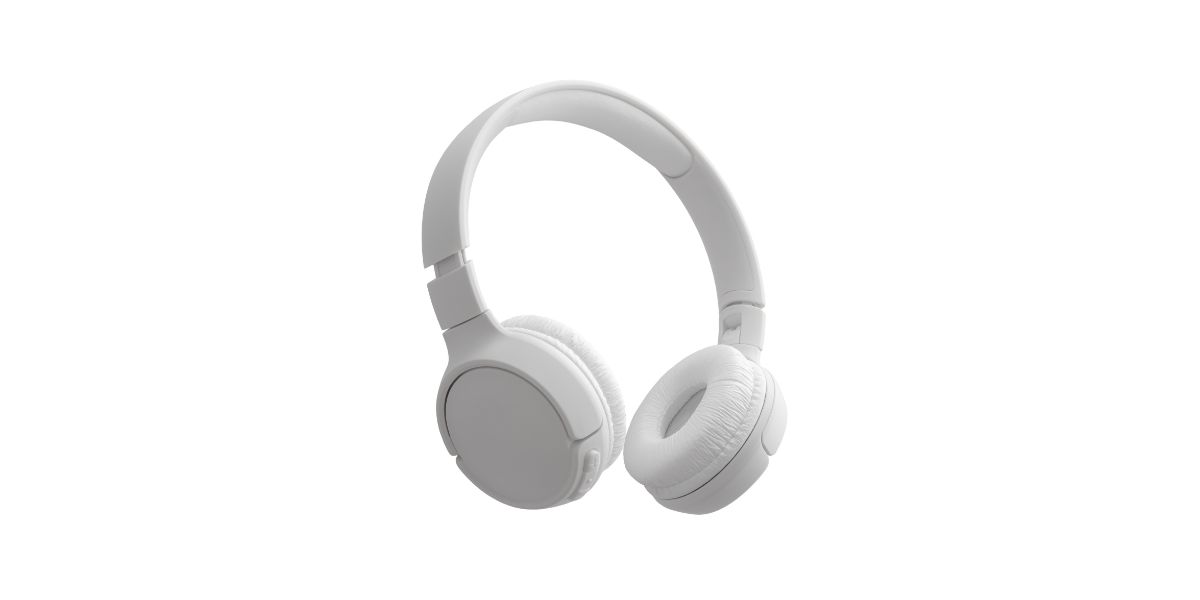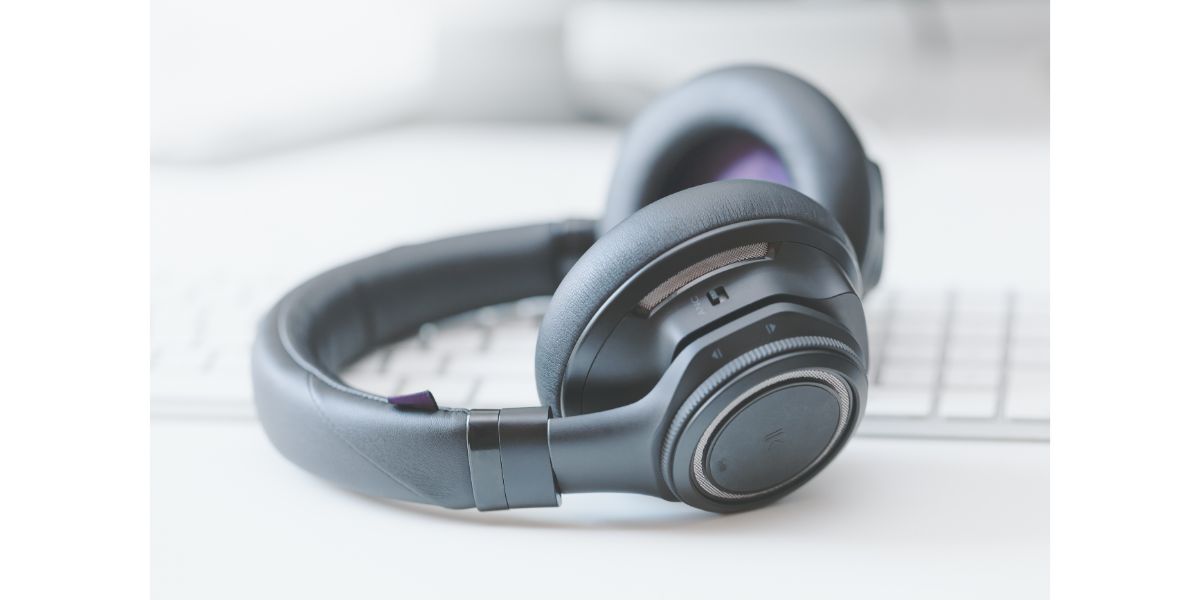Disclaimer: This post may contain affiliate links, meaning we get a small commission if you make a purchase through our links, at no cost to you. For more information, please visit our Disclaimer Page.
Lossless audio is the preferred music medium for many audiophiles, but it’s also notoriously less efficient than formats like MP3. Do you get to enjoy its benefits when listening to music through your JBL speaker or Bluetooth headphones?
Bluetooth can’t handle lossless audio due to its limited bandwidth. However, in 2021, Qualcomm introduced aptX Lossless technology, which claims to preserve high sound resolution when transmitting audio via Bluetooth. Devices that support the new codec will be available starting in 2023.
In this article, we will explain how Bluetooth transmits audio and what limitations it has in terms of sound quality. We will also discuss a new and promising technology presented by Qualcomm that aims to overcome those limitations and provide lossless audio streaming over Bluetooth.
Table of Contents
Understanding Bluetooth Bandwidth
Shortly, Bluetooth has to compress audio files to transmit them efficiently between devices. Finding the balance between speed and convenience and audio quality has always been its central issue, although in the past the balance was always shifted towards effective transmission.
On the other hand, Audio accuracy was not as much of a priority. However, over the past years, we’ve been gradually stepping away from the challenges of wireless transmission to focusing on ways to perfect it. The improvement from what sound used to be on the rise of Bluetooth technology is immense.
Still, the limitations of Bluetooth persist even though it’s virtually everywhere around us. To understand the limitations of lossless audio, it’s essential to talk more about how Bluetooth works.
What Is Bandwidth and Why It’s Important
Bandwidth can be shortly described as the frequency range used by a transmission technology. It’s also the center point of the dilemma I talked about earlier: higher frequencies allow for a higher data transmission rate, but they also shorten the range.
Therefore, the bandwidth highly determines transmission capability. Bluetooth uses 2.4 GHz bandwidth, from 2400 to 2483.5 MHz. It’s universal and allows for transmitting data with low processing power, which is pretty much the goal of Bluetooth.
However, its data transmission rate is rather modest. The data rate is how much data can be transmitted per second, and, in the case of Bluetooth, it’s not much at all. While its newer versions can, theoretically, work at 2 Mbps, the real speed averages 345 Kbps.
This means that audio quality has to be lowered in order for Bluetooth to transmit the files fast enough. Today’s codecs claim to support even the highest-quality sound, up to 32-bit/96kHz. However, that won’t be what you hear. Bluetooth simply cannot work at such a high data rate, which is why data is compressed.
The Limitations of Bluetooth Bandwidth for Lossless Audio
Now it’s time to discuss lossless audio. It’s also a technology of audio compression, but as the name suggests, it preserves the full audio track as opposed to the lossy audio formats you get when streaming over Bluetooth.
Why do we call it lossy? Simply put, data is partially lost for the audio file to be compressed to transmittable size. Compression technology has to sacrifice some of the less audible frequencies of a song to bring down its size.
MP3 and ACC, the two most common audio formats, are lossy. However, on top of that, Bluetooth can apply its own compression to your audio, even if it’s already compressed.
Bluetooth doesn’t always compress files, but it may do it even if the transmission of the file fits entirely within the Bluetooth bandwidth. This is because Bluetooth needs to leave some space for other information, such as notifications and calls.
Granted, the sound quality that Bluetooth allows has seen a steady improvement over the years. In fact, the result of properly done decompression won’t be distinguished from CD-quality audio (16-bit/44.1kHz) by an average user.
Spotify Premium, for instance, supports 320 Kbps. That’s less than the average Bluetooth speed, so if you’re a Spotify user, Bluetooth won’t take much from your listening experience. However, Apple, Amazon Music, and other services offer a much higher resolution, and this is where Bluetooth compression makes a real difference.
By much higher resolution we mean, of course, lossless audio, which is essentially CD-quality sound. It delivers the audio track with the highest possible accuracy. No lost data or shrunk quality.
The speed required to transmit so much data is 1.4 Mbps. Compare that to the average Bluetooth data rate, and you’ll see where the problem lies. The worst part is that the speed limit is determined by the bandwidth, so there isn’t much to be done about this.
Or there wasn’t—until now.
aptX Lossless and the Future of Bluetooth Transmission
aptX has been around for decades and keeps developing today. It’s the general name of audio compression technologies that support CD quality, all owned by Qualcomm.
aptX has been the hope of better Bluetooth audio transmission for most of its existence. Of all the codecs available today, aptX came closest to finding a way of optimizing audio files without losing any data bits within the limitations of Bluetooth bandwidth.
So far, we’ve seen aptX Adaptive at 420 Kbps and aptX HD at 576 Kbps. Lossless audio, on the other hand, still requires 1.4 Mbps.
aptX Lossless
In 2021, Qualcomm announced that they had finally achieved the results everyone was counting on aptX for. They introduced aptX Lossless, claiming it allows for transmitting audio over Bluetooth in CD quality, or without any data loss.
The announced data rate is between 1.1Mbps and 1.2Mbps. Not quite there, but apparently close enough. Qualcomm assures that the speed supported by aptX Lossless delivers audio files with maximum accuracy and identically to the original file.
The technology, however, comes in a package named Snapdragon Sound. It incorporates the optimized wireless audio transmission technologies for music, gaming, and calls, promoting a cohesive audio experience with the best-quality sound.
The tricky part is aptX Lossless has to be supported by both devices connected via Bluetooth to bring this experience to life. The headphones you’re using also must be able to produce high-resolution sound.
Moreover, the original audio has to be of CD quality in the first place. Going back to the Spotify example, aptX Lossless won’t miraculously upgrade the audio resolution from, let’s say, 160 Kbps, the highest rate offered in the free version.
Snapdragon Sound was promised to enter Android devices in 2023, but the list of smartphones and headphones supporting the technology is limited. You can check it out here. And yes, Apple devices are not among those who use aptX.
So, while the technology is technically there, it will be some time until we can test it and see if it can be a real game-changer. It’s debatable whether aptX Lossless is worth it for the general public with so many requirements you have to meet to benefit from it.
However, we can say with a solid degree of certainty that aptX Lossless is a big step for Bluetooth transmission, an exciting and promising innovation with the potential to transform our listening experiences and wireless audio.
Final Thoughts
Bluetooth is limited in its data rate for audio transmission by the bandwidth it uses, which is why it can’t currently handle lossless audio. However, the issue can be potentially resolved with the new aptX lossless codec that claims to support CD-quality audio.
Its data rate is promised to be 1.1Mbps to 1.2Mbps, which is slightly lower than what is required for CD resolution. It’s also only available for a limited number of devices. While there is potential for Bluetooth to transmit lossless audio, it’s not quite there yet.


